Art History
Frans Hals Is a Master of the ‘Fleeting Moment.’ Here Are Backstories Behind 5 Seminal Works
His enigmatic portraits have been traveling across Europe for nearly a year.

Frans Hals is one of art history’s most recognizable names, and painter of some of its most recognizable faces. One characteristic of Hals’ work which has set him apart from his contemporaries and cemented his legacy is the looseness of his brushwork. His ability to suggest high levels of detail with just a few brushstrokes heavily influenced consequent generations of artists, including the Impressionists. This quality has seen Hals celebrated as a forerunner of modernism, which blossomed 200 years after his death.
Hals was born and spent the majority of his life in Haarlem, the capital of North Holland near Amsterdam. It was the characters of Haarlem, too, that he dedicated his life to painting, creating portraits of those both in the city’s upper circles and those considered far out of the realm of polite society. “Frans Hals: Master of the Fleeting Moment” is now in the final month of its residency at Berlin’s State Museums after its time at London’s National Gallery and at Amsterdam’s Rijksmuseum in the spring and summer.
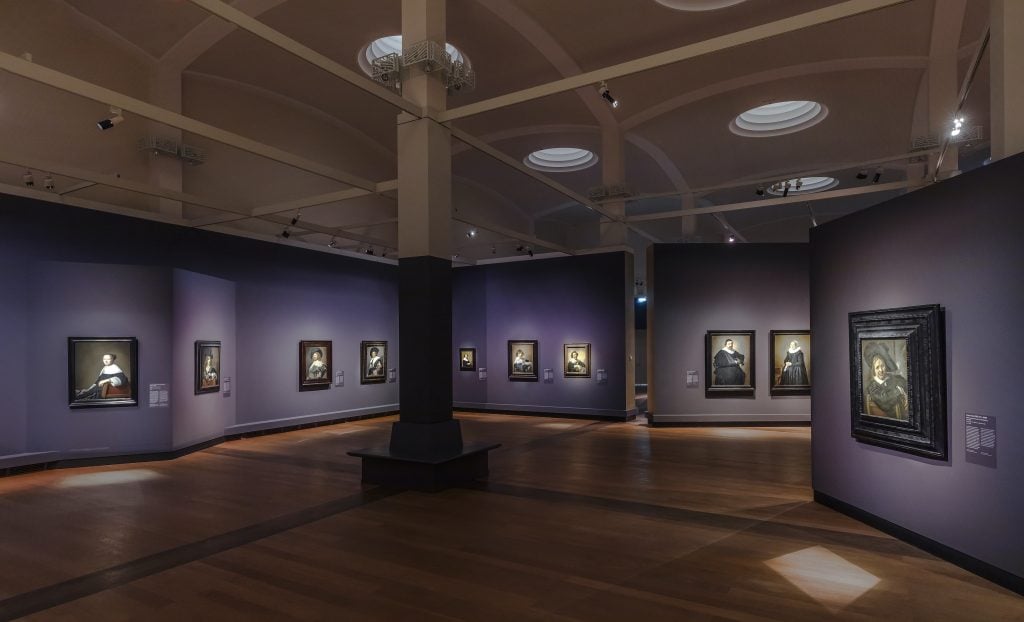
Installation view of ‘Frans Hals: Master of Fleeting Moments’. © Staatliche Museen zu Berlin / David von Becker.
For the touring show, 50 artworks have been loaned from 20 public and several private collections from Europe and North America, including works by Hals’s contemporaries and artists directly inspired by the master. These include work by the 19th century German painters Max Liebermann, who copied from Hals’ works during a three-month visit to Holland in the 1870s—and Wilhelm Liebl, who first saw work by the Dutch master in the Louvre during a trip to Paris in the late 1860s.
Also included in “Master of the Fleeting Moment” in Berlin is a work by Judith Leyster, now considered one of the Dutch Golden Age’s greatest artists. But before her rediscovery in the 1890s her works were attributed either to her husband Jan Miense Molenaer or to Hals himself. In fact, it was a legal interaction with Hals which assisted with Leyster’s growing reputation during her lifetime, when she sued the older artist for taking on one of the students from her workshop without Guild permission.
We took a look at five of the Hals’ best-known faces from the exhibition.
The Laughing Cavalier (1624)
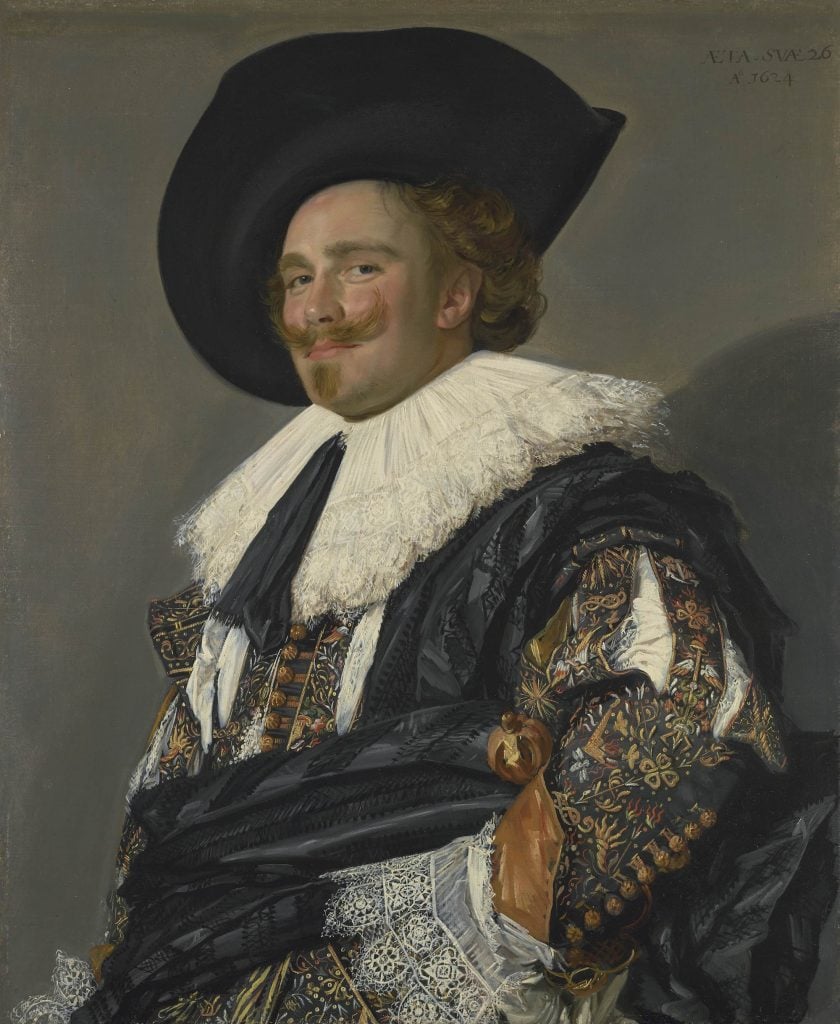
Frans Hals, The Laughing Cavalier (1624). © Wallace Collection, London, UK.
One of Hals’ least obviously laughing “laughing” portraits, The Laughing Cavalier is perhaps his best-known work. Given its popular nickname in the late 1880s, the portrait of the smiling young man—aged 26 in the painting—showcases grand fashions from France worn by the Dutch upper classes, as well as Hals’s ability to create complex textures using a limited color palette. Details on the cavalier’s outfit, including bees and arrows, have also fascinated audiences as symbols for love and good fortune. This painting, on loan from London’s National Gallery, marked a turning point in the value of Hals’s works for collectors when it sold for a whopping 51,000 francs in 1865 to the 4th Marquess of Hertford, under the title portrait d’un homme.
Malle Babbe (1640)
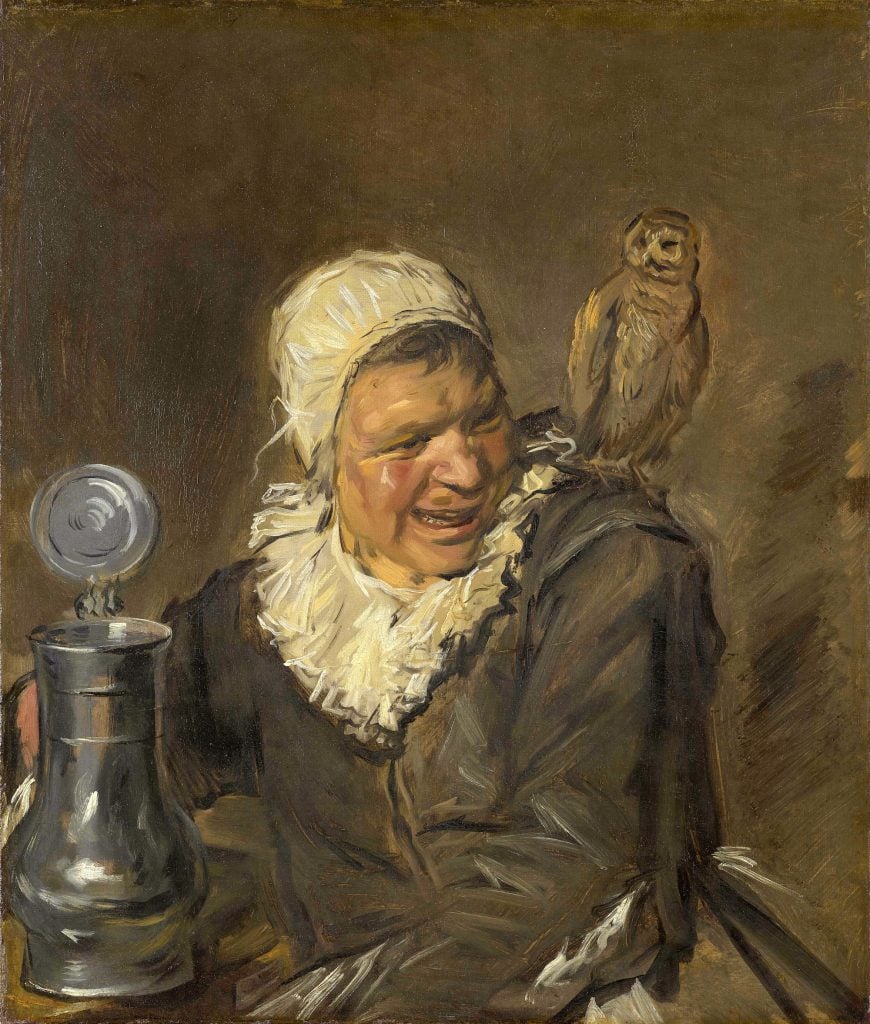
Frans Hals, Malle Babbe (c. 1640). © Staatliche Museen zu Berlin, Gemäldegalerie / Christoph Schmidt.
From Berlin’s Staatliche collection, Malle Babbe is also a Hals fan-favourite. The painting, also referred to as the Witch of Haarlem is believed to be a portrait of Barbara Claes, an unwell woman who lived at the psychiatric hospital Het Dolhuys. Claes was a notorious figure in Haarlem, and likely known to Hals. The inclusion of an owl on her shoulder may be a reference to the old Dutch adage to be “drunk as an owl;” owls can also be interpreted as symbols of foolishness. Malle Babbe has long been a popular work, and in the 1860s Gustave Courbet made his own copy of the painting while visiting Germany where the painting was held.
Young Man with a Skull (1627)
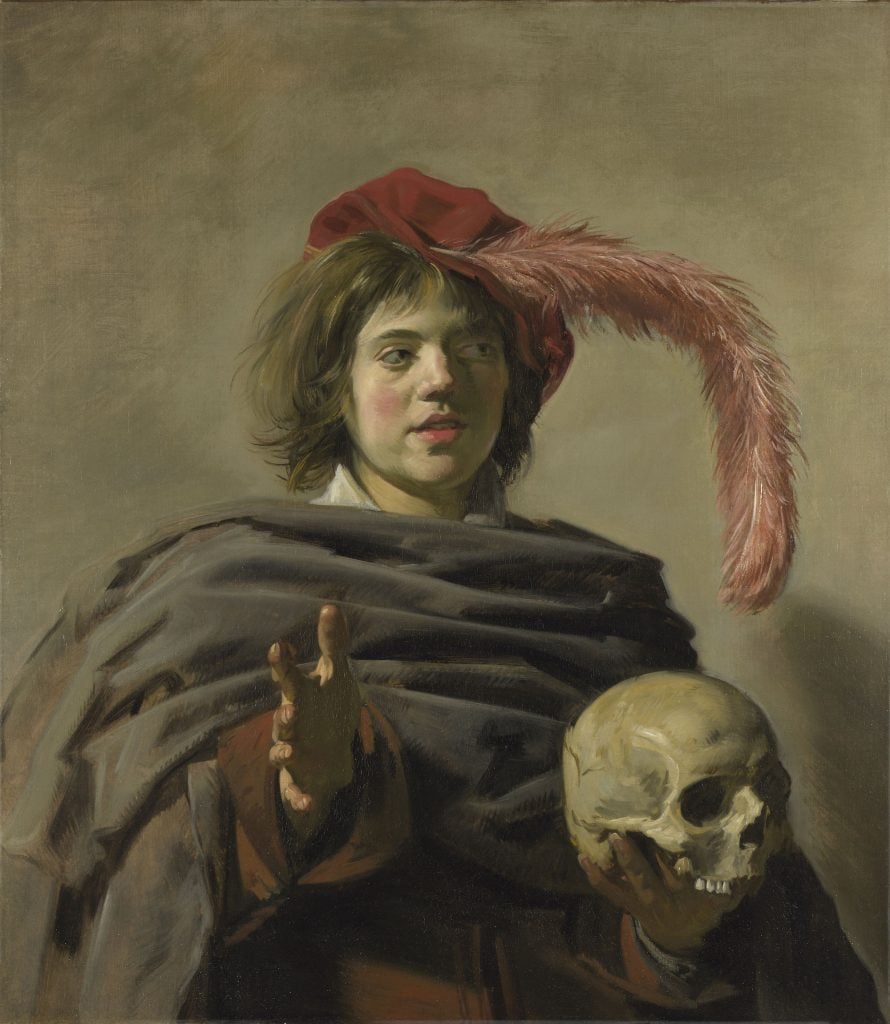
Frans Hals, Young Man with a Skull (c. 1627). © The National Gallery, London.
“Alas, poor Yorick!” is what many have assumed Hals’s Young Man may be about to say, assigning the painting to be the famous scene in Shakespeare’s Hamlet (first published in 1603). But, alas, there are no records of Shakespeare being performed in the Netherlands by the time Hals was creating this work. Instead,Young Man with a Skull is a vanitas painting—an artwork designed to remind viewers of the brevity of life—and had been a popular subject choice since the 16th century (the subject is also wearing 16th century outfit). This painting is in the permanent collection of London’s National Gallery.
The Merry Drinker (1629)
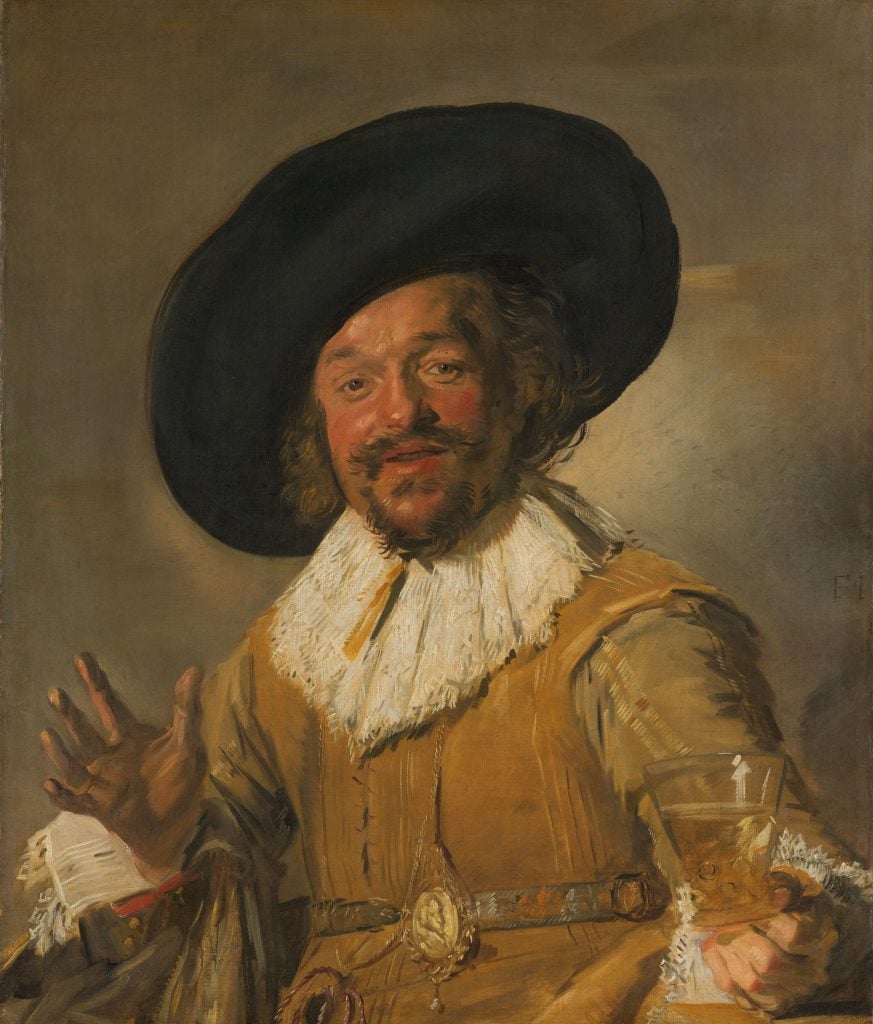
Frans Hals, The Merry Drinker (c. 1629). © Rijksmuseum, Amsterdam.
There has been debate about whether or not Hals’s Merry Drinker is a portrait of a real man or a genre painting of an imagined one. That the sitter is a real person who commissioned the portrait is seen as unlikely due to the visibility of his teeth through his smile—something thought uncouth by the classes able to afford to commission artworks. The subject wears a medal on his belt, which some art historians believe could give an indication of the sitter’s identity, if only Hals’s loose brushwork didn’t obscure its details. One theory is that the sitter in the Rijksmuseum piece is Hendrick den Abt, an innkeeper who owned several paintings by Hals, although the outfit worn is a typical get-up for men in the military, and the piece’s title refers to the sitter as a “civic guardsman.”
The Laughing Boy (1630)
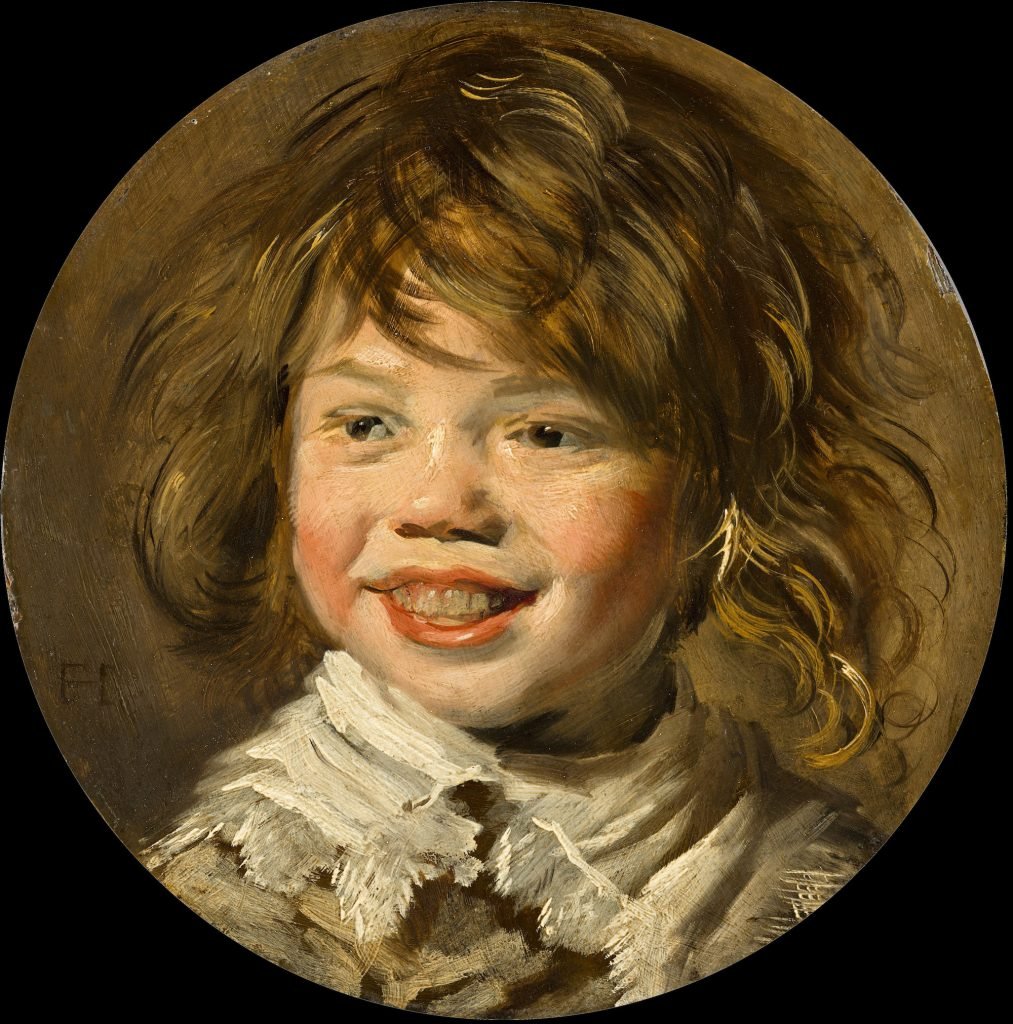
Frans Hals, The Laughing Boy (1630). © Mauritshuis, Den Haag.
From the collection of the Mauritshuis in The Hague, Laughing Boy is one of a series of tondos (round artworks) of giggling youths by Hals. It is one of Hals’s most loved tronies—artworks which serve the purpose of examining an intense mood or expression, rather than getting across a likeness of a real sitter. Laughter has always been considered one of the hardest expressions to capture in paint, but Hals manages it with minimal strokes—with just a single white streak marking the bridge of the boy’s nose.
“Frans Hals. Master of the Fleeting Moment” is on view at the Gemäldegalerie in Berlin until November 3, 2024.





